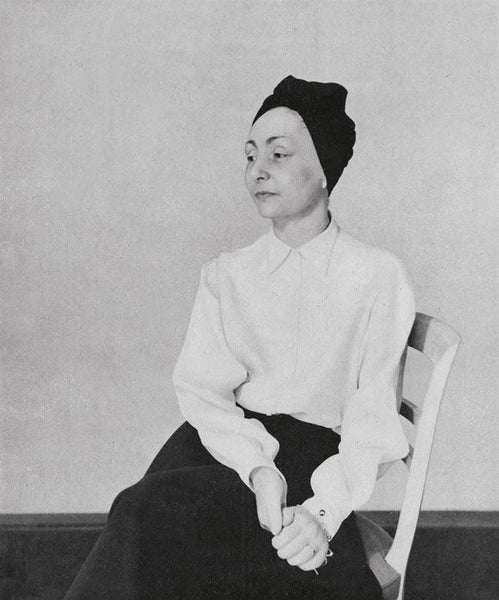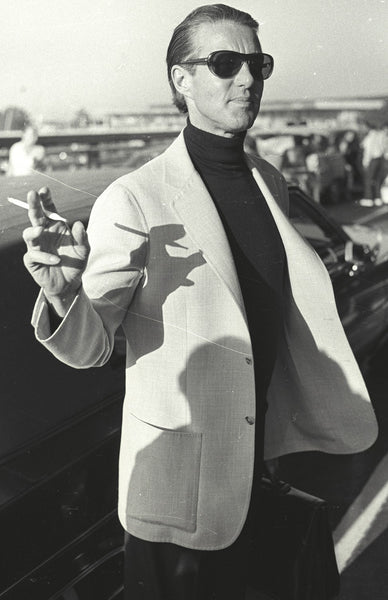Designer Spotlight: Azzedine Alaïa

Azzedine Alaia was born in Tunis in 1935, to a family of wheat farmers. He idolized his older sister, Hafida, and it was through her that he earned an interest in fashion and couture. Mrs. Pineau, a French friend of his mothers, was also integral to his growth as a designer; she gave him copies of Vogue and helped lie about his age to enroll him in Tunis’ École des Beaux-Arts. Alaia studied sculpture at the school, and alongside his sister he worked as a dressmaker to pay for his school fees. From the very start, Alaia idolized Madame Vionette, the couturier who introduced the bias cut - an indication of the body conscious styles he would go on to champion.
Alaia moved to Paris in the 1950s, sometime after finishing his studies at the École des Beaux-Arts in Tunisia. He worked for various houses and designers including for Christian Dior (where he was fired after spending five days “sewing labels”), Guy Laroche, and Thierry Mugler, before striking it out on his own. While in Paris Alaia worked as a housekeeper and sometimes dressmaker for nobility, including the Marquise de Mazan, and the Countess de Blegiers. Through his day job he caught the discerning eyes of the Parisian elite, including Louise de Vilmorin and Greta Garbo.
Alaia designed his first ready - to - wear collection for Charles Jourdan in 1970. His body conscious forms were groundbreaking, but not immediately adored. In the later half of the decade he ran an atelier out of his Rue de Bellechasse apartment, serving the high end clientele he had met while working for nobility, including Marie-Hélène de Rothschild. In 1980s, Alaia produced his first ready - to - wear collection, and rose to prominence on the international stage with his body conscious, curve hugging designs.
“The Trinity” of reigning supermodels of the day, Naomi Campbell (with whom he shaded a loving father-daughter relationship(he would even take her to dentist appointments!)), Linda Evangelista, and Christy Turlington, were seen time and time again in his slinky dresses and sky high heels. He also designed much of the wardrobe of Grace Jones' character “May Day” in the 1985 James Bond Film “A View to Kill”. In 1988 boutiques sprung up in New York and Beverly Hills, and he moved his own Paris atelier to a larger site. The “King of Cling” had finally made it.
In the 1990s, after the death of his beloved sister Hafida, Alaia withdrew almost entirely from fashion. He still saw private clients and was continued to be involved with his ready - to - wear line. Alaia eventually returned after conducting a series of business moves in the 2000s -involving Prada and the Richmond group (owner of Chloe and Cartier)- that would guarantee his artistic freedom as well as financial safety.
Azzedine Alaia was the master of his own destiny, rejecting aspects of the fashion industry including the traditional calendar, timelines, and advertising norms. He refused to bend to the market’s will. He was a perfectionist who would show his work only when it was finished. Alaia was internationally renowned, his designs appearing on the covers of magazines, runways across the globe, and in the halls of Museums. He was made a chevalier of the Légion d’Honneur in 2008.
Also in Adore MRS. Couture

Designer Spotlight: Madame Gres

Designer Spotlight: Roy Halston Frowick
Halston was thrown into the limelight when Jacqueline Kennedy wore his pillbox hat to John F. Kennedy’s inauguration. Soon Halston expanded into women’s wear, creating both couture and ready-to-wear fashion catering to the fashionable and elite jet set. Halston also accepted the honor of designing the 1976 US Olympic team uniforms, redesigned Braniff Airlines’ uniforms in 1977, and created uniforms for the New York Police Department and the Girl Scouts in 1978.
Halston was innovative, using slinky knit material and ultrasuedes, and introducing a halter dress design that elongated a wearer’s silhouette. He pioneered the sensual and soft draped looks associated with disco and his beloved Studio 54.

